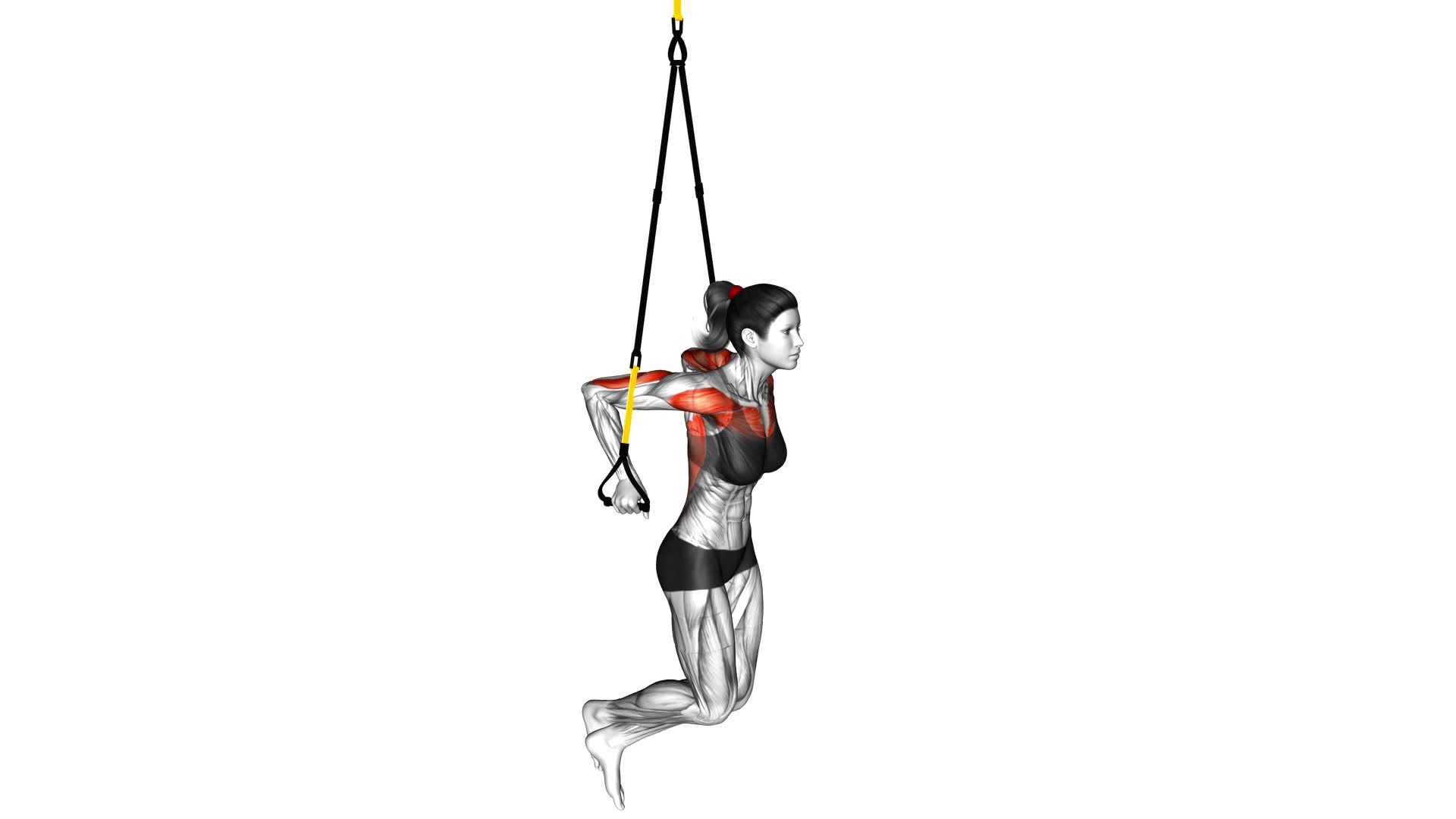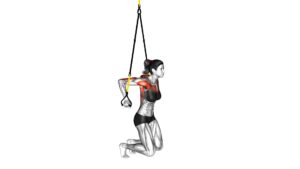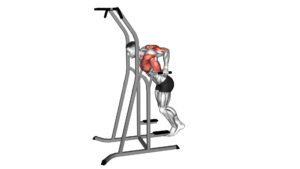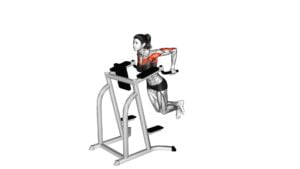Suspender Chest Dip (female) – Video Exercise Guide & Tips

Get ready to strengthen your chest muscles with the Suspender Chest Dip!
Watch This Exercise Video
This video exercise guide and tips will show you the proper form and technique to perform this effective workout.
Whether you're a beginner or a seasoned fitness enthusiast, there are modifications and progressions for all fitness levels.
By avoiding common mistakes and following the tips provided, you'll maximize your workout and prevent injuries.
Let's dive in and get those chest muscles toned and strong!
Key Takeaways
- The Suspender Chest Dip is a beneficial exercise for building and strengthening chest muscles, as well as engaging triceps, shoulders, and core muscles.
- Proper form and technique, such as maintaining proper posture and controlling the descent, are essential for maximizing the effectiveness of the exercise and preventing injuries.
- Modifications and progressions, such as using resistance bands or adding weight, can be made to tailor the exercise to different fitness levels and increase the challenge.
- It is important to avoid common mistakes like dropping the shoulders or rushing the movement, and to focus on proper technique and injury prevention to have a safe and effective workout.
Benefits of the Suspender Chest Dip
To maximize your upper body strength and target multiple muscle groups, the suspender chest dip offers a highly effective compound exercise. This exercise has numerous benefits that make it a great addition to your workout routine.
One of the main benefits of the suspender chest dip is that it helps to build and strengthen your chest muscles, specifically the pectoralis major and minor. By consistently performing this exercise, you can develop a more defined and sculpted chest. Additionally, the suspender chest dip also engages your triceps, shoulders, and core muscles, providing a complete upper body workout.
Another benefit of the suspender chest dip is its versatility. There are various ways to perform this exercise, allowing you to target different muscle groups and adjust the difficulty level based on your fitness level. For instance, you can use different grip positions, such as a narrow grip or wide grip, to emphasize different areas of your chest and triceps. You can also increase or decrease the resistance by adjusting the height of the suspension straps or using a weight belt. These variations help to keep your workouts challenging and prevent plateauing.
In the next section, we'll discuss the proper form and technique for the suspender chest dip, ensuring that you perform the exercise correctly and safely.
Proper Form and Technique for the Exercise
Continuing from the previous subtopic, let's dive into the proper form and technique for performing the suspender chest dip. To ensure you get the most out of this exercise while minimizing the risk of injury, keep the following tips in mind:
- Maintain proper posture: Keep your chest lifted, shoulders back, and core engaged throughout the movement.
- Control the descent: Slowly lower yourself down until your elbows reach a 90-degree angle. Avoid dropping too quickly, as this can strain your shoulder joints.
- *Common mistake:* Rushing the movement and using momentum to lower yourself down, which reduces the effectiveness of the exercise and increases the risk of injury.
- *Injury prevention tip:* Focus on controlling the movement and engaging your chest muscles, rather than relying on momentum.
Transitioning into the subsequent section about modifications and progressions for all fitness levels, it's important to master the proper form and technique of the suspender chest dip before attempting any advanced variations. This will lay a solid foundation for your training and help you progress safely and effectively.
Modifications and Progressions for All Fitness Levels
Start by incorporating modifications and progressions into your suspender chest dip routine to accommodate different fitness levels. Exercise modifications can be helpful for beginners or those with physical limitations. One modification is to use a resistance band for assistance. By attaching a band to the suspension system and looping it under your knees or feet, you can reduce the amount of body weight you have to lift. This makes the exercise easier and allows you to build strength gradually.
For advanced progressions, you can try adding weight to increase the challenge. Use a weight plate or a dumbbell and hold it between your feet or use a weight belt. This extra resistance will help you build more strength and muscle.
Another advanced progression is to perform the exercise on parallel bars instead of using suspender straps. This requires more stability and engages different muscles, making the exercise more challenging.
Remember to always listen to your body and progress at a pace that feels comfortable and safe for you. By incorporating exercise modifications and advanced progressions, you can tailor the suspender chest dip to your fitness level and continue to challenge yourself as you get stronger.
Common Mistakes to Avoid During the Suspender Chest Dip
Avoiding these common mistakes will help you get the most out of your suspender chest dip exercise. To ensure you perform the exercise correctly and safely, be mindful of the following common mistakes and focus on maintaining proper technique:
- Dropping the shoulders: Keep your shoulders down and back throughout the entire movement. Avoid allowing them to hunch up towards your ears, as this can strain your neck and shoulders.
- Flaring the elbows: Keep your elbows close to your body as you lower yourself down. Letting your elbows flare out to the sides can put unnecessary stress on your shoulders and decrease the effectiveness of the exercise.
Tips to Maximize Your Workout and Prevent Injuries
To get the most out of your suspender chest dip workout and prevent injuries, focus on maintaining proper form and incorporating these tips.
One important tip is to prevent muscle imbalances by working on both your chest and back muscles. This will help you maintain a balanced physique and reduce the risk of injury.
Additionally, it's crucial to warm up before starting your workout. Warm up exercises like arm swings, shoulder circles, and light cardio can help increase blood flow to your muscles and prepare them for the workout ahead. This won't only reduce the risk of injury but also improve your performance during the workout.
Another tip is to listen to your body and take breaks if needed. Pushing through pain or fatigue can lead to overexertion and injuries.
Lastly, make sure to stretch after your workout to improve flexibility and prevent muscle tightness.
Frequently Asked Questions
How Many Sets and Reps Should I Do When Performing the Suspender Chest Dip?
When performing the suspender chest dip, it's important to focus on proper form and technique. Remember to keep your core engaged, shoulders down, and chest lifted throughout the exercise.
As for the number of sets and reps, it will depend on your fitness level and goals. Start with 2-3 sets of 8-12 reps and adjust as needed.
Gradually increase the intensity as you get stronger and more comfortable with the movement.
Can Men Also Perform the Suspender Chest Dip Exercise?
Yes, men can definitely perform the suspender chest dip exercise. It's a great way to strengthen your upper body, including your chest, shoulders, and triceps.
If you're a beginner, you can modify the exercise by using a lower dip bar or assistance bands to make it easier.
The suspender chest dip is a challenging exercise that can help improve your overall upper body strength and muscle definition.
Is It Necessary to Wear Suspenders While Doing the Suspender Chest Dip?
Wearing suspenders isn't necessary for the suspender chest dip exercise. It's just a name given to the exercise, and you can perform it without actually wearing suspenders.
The recommended sets and reps for this exercise may vary depending on your fitness level and goals. It's always best to start with a lower number of sets and reps and gradually increase as you become more comfortable and stronger.
Can the Suspender Chest Dip Help in Toning the Arms and Shoulders?
Yes, the suspender chest dip can definitely help in toning your arms and shoulders. This exercise targets the chest, triceps, and shoulders, which leads to improved muscle definition and strength in those areas.
To get the most out of this exercise, make sure to maintain proper form and technique. Keep your core engaged, shoulders down and back, and lower yourself slowly and controlled.
Are There Any Alternative Exercises That Target the Same Muscles as the Suspender Chest Dip?
Looking for alternative exercises that target the same muscle groups as the suspender chest dip? There are a few options you can try.
Push-ups are a great alternative that work your arms and shoulders.
Tricep dips also target those muscles effectively.
If you're looking for a more challenging exercise, you can try the bench press or the overhead press.
These exercises will help you tone your arms and shoulders just like the suspender chest dip.
Conclusion
In conclusion, the suspender chest dip is a beneficial exercise for females looking to strengthen their chest muscles. By following proper form and technique, modifications can be made to accommodate all fitness levels.
It's important to avoid common mistakes and maximize your workout for optimal results. By following these tips, you can prevent injuries and make the most out of your suspender chest dip routine.

Author
Years ago, the spark of my life’s passion ignited in my mind the moment I stepped into the local gym for the first time. The inaugural bead of perspiration, the initial endeavor, the very first surge of endorphins, and a sense of pride that washed over me post-workout marked the beginning of my deep-seated interest in strength sports, fitness, and sports nutrition. This very curiosity blossomed rapidly into a profound fascination, propelling me to earn a Master’s degree in Physical Education from the Academy of Physical Education in Krakow, followed by a Sports Manager diploma from the Jagiellonian University. My journey of growth led me to gain more specialized qualifications, such as being a certified personal trainer with a focus on sports dietetics, a lifeguard, and an instructor for wellness and corrective gymnastics. Theoretical knowledge paired seamlessly with practical experience, reinforcing my belief that the transformation of individuals under my guidance was also a reflection of my personal growth. This belief holds true even today. Each day, I strive to push the boundaries and explore new realms. These realms gently elevate me to greater heights. The unique combination of passion for my field and the continuous quest for growth fuels my drive to break new ground.







